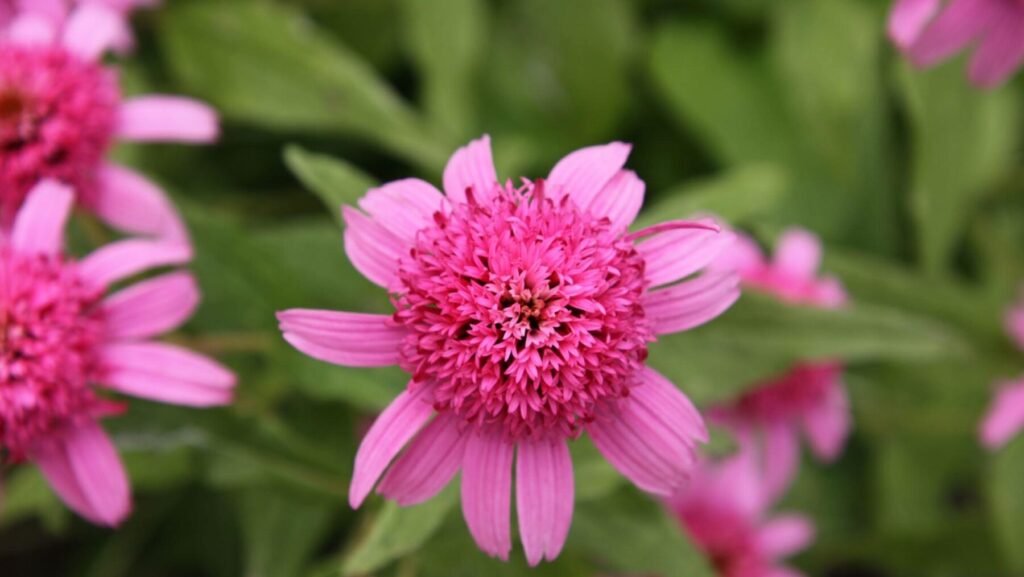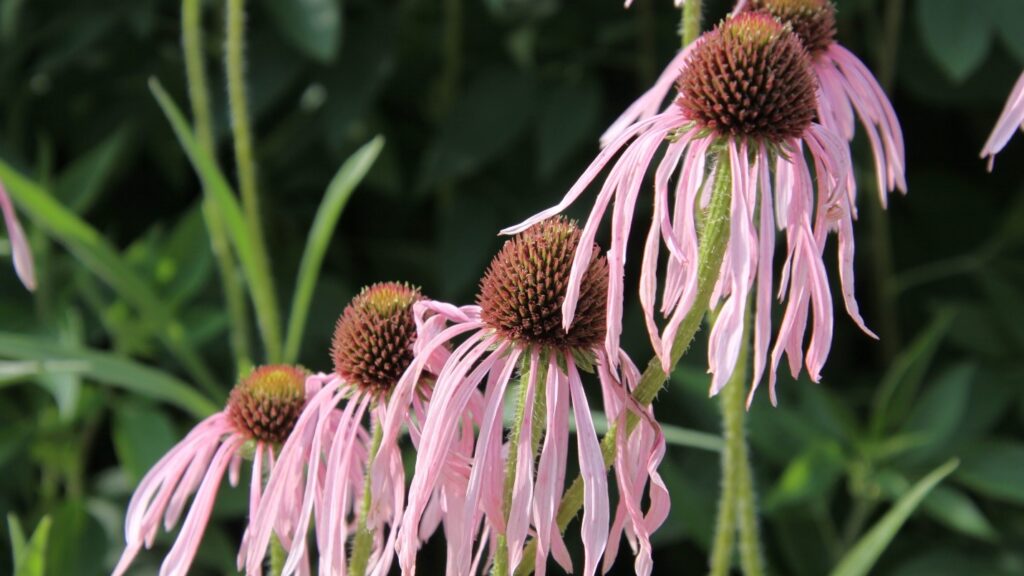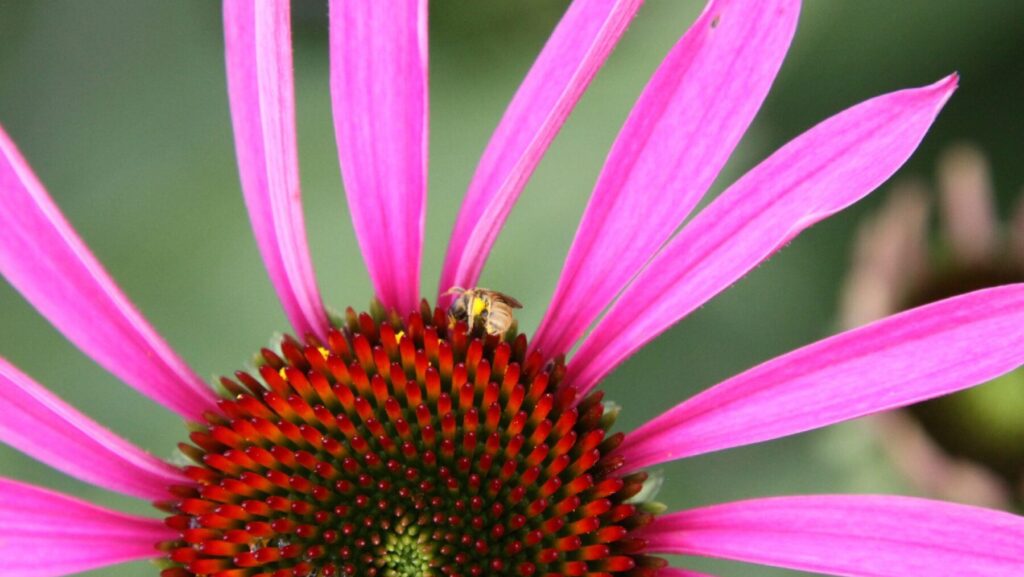
Coneflowers are an iconic summer garden favorite in the daisy family (Asteraceae) and have been in bloom at the Arboretum for a few weeks now. There are multiple genera of plants (Echinacea spp., Ratibida spp., and some Rudbeckia spp.) in this family that are commonly referred to as coneflowers, even though they are actually different species. All mentioned below are native to, and commonly grown in, North America. Coneflowers are distinctly identifiable by their daisy-like structure of outstretched colorful petals and their medium- to dark-brown or black central floret. However, there are clear differences in the appearances between the various species and genera. They come in multiple shapes with unique looking florets and variable stems. Petals also vary in color and in orientation.

These characteristics make coneflowers a popular choice for gardeners. These plants can also take the full summer sun and heat with periods of drought and have long bloom times, which can be extended even further by deadheading, which if done properly, can encourage plants to bloom well into fall, sometimes even up until the first frost.

Echinacea is a well-known flowering herbaceous perennial that blooms from late June through the summer and into September in our region. This plant has a long, hairy stalk up to four feet high topped by a spiky cone-shaped flower head. Echinacea comes in a wide variety of cultivars with colors ranging from pinks, purples, reds, and oranges to yellow, whites, and greens. Leaves are ovate in shape with a rough texture and serrated margins. Nearly all Echinacea species serve as potential host plants and nectar sources for butterflies, bees, and other pollinators, such as the ruby-throated hummingbird. After blooms have faded in the fall, seed heads also become an important food source for songbirds such as the American goldfinch.
With more than six different types available at the Arboretum, Echinacea purpurea and its cultivars stand out as the iconic coneflower found in many gardens. E. purpurea is distinct for the size of the spiny central disc and the pinkish lavender–colored leaves. This species can be found in the Pollinator and Bird Garden and the Childhood’s Gate Children’s Garden at the Arboretum.

Echinacea pallida, commonly known as pale purple coneflower, is another species found in the botanic gardens. This species is notably distinct from E. purpurea with its thin, elongated flowers that dramatically droop around the seed head. Like others of its genus, this flower gets its name from Echinos, the Greek word for hedgehog, in reference to the iconic spiny central floret. Additionally, this and many other Echinacea species have been used for medicinal purposes in North America to fight illness and boost immunity. The roots and leaves of the plant are typically utilized the most and can be steeped into a tea or used in a tincture.

Ratibida columnifera, otherwise known as long-headed coneflower or prairie coneflower, is another type of flowering plant from the daisy family. While this flower is not in the Echinacea genus, its common name also often includes coneflower and they share commonalities in their hardiness, bloom period, and distinct central florets, so we’ll include it here. Distinct for the shape of its cylindrical central disc, this flower is another common pick for gardeners, given its attractive vibrant colors and easy maintenance. R. columnifera likes heavy sunlight, even tolerating extended periods of drought. This plant can be found in the Pollinator and Bird Garden. There are currently two different species at the Arboretum (R. columnifera and R. pinnata) — both of which are in bloom!

Be sure to look out for all of these blooms this season, and while you’re visiting, try out our new Arboretum Explorer tool on your mobile device to find locations of coneflower and other plants on an interactive map while exploring the gardens!


